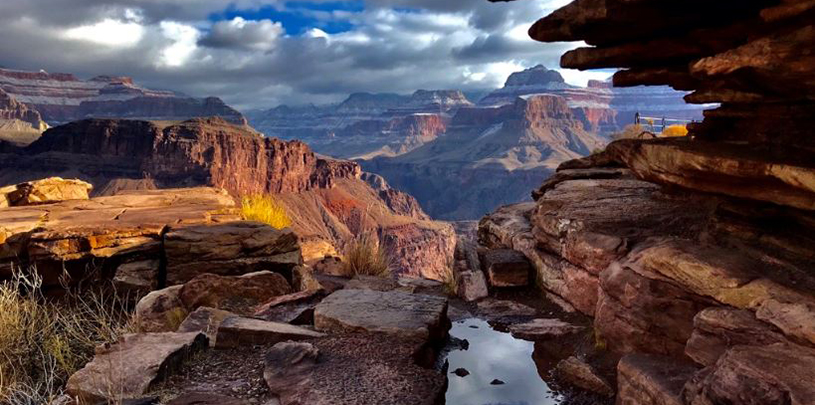
by Amber Reimondo, Energy Director
There’s a metaphorical scene that replays in my head as we push ahead toward finally winning permanent protection for the Grand Canyon region from the toxic threat of uranium mining. The scene is one from my childhood, of racing my brothers to the top of a sand dune back in the wild and beautifully surreal playground of the Red Desert in southwest Wyoming, where we grew up. Reaching the top is far from hopeless, but although you’re moving as hard as you can, progress is slow. Every step is energy intensive; for each stride forward, you slide back some, maybe you even lose the entire distance of your last step. But you don’t expect anything different because it’s a sand dune and that’s just the nature of it. And even though your progress is slow, it’s still made; you build on your past success until at last, determined and out of breath, you reach the top.
Since being introduced in the 116th Congress, under an unsupportive administration that issued a veto threat, the Grand Canyon Centennial Protection Act — a bill that would make permanent the current temporary mining ban on about 1 million acres of federal land around the Grand Canyon — has had a subcommittee hearing, passed out of the House Natural Resources Committee, and the full House of Representatives — twice. The first time it passed the House was as a stand-alone bill, the second as an amendment to the National Defense Authorization Act. It was also introduced in the Senate.
Throughout this time, Indigenous tribes and nations, the National Congress of American Indians, regional businesses, city and county governments, faith groups, sporting groups, outdoor recreation groups, and other NGOs, all came together to make this progress possible. With so little time left in this Congress, it’s very unlikely the bill will move further before the next Congress begins in January.
But that doesn’t mean the progress we’ve made thus far was for naught. We stand higher on the side of the sand dune than ever before and we’re looking forward with hope.
Back in August, now President-elect Joe Biden tweeted his support for protecting the Grand Canyon from uranium mining and issued a statement explaining why. Having the incoming president’s support alone is a huge step forward.
But now we also have Arizona Senator Mark Kelly, a mining ban supporter, who was sworn in on December 2, 2020, replacing former Senator Martha McSally. McSally has been eternally silent on the bill. This means that now both of Arizona’s Senators also support the permanent mining ban.
Even with the question of Senate control hinging on the outcome of two runoff Senate-seat elections, this represents the strongest political standing this issue has had to date, and it could get stronger still. We won’t know until January which set of policy priorities will take control in the Senate, but there is potential for this issue’s standing to strengthen further.
Regardless of how the political environment in Washington, D.C. shakes out by early 2021, one thing is for sure: We have our eyes on the peak of the sand dune, and that peak is winning a permanent mining ban around the Grand Canyon during the Biden administration. We can do it. Sign up for our action alerts, and with your help contacting decision-makers and members of Congress when it matters most, we will do it. We have to.
80% of Arizona voters support Baaj Nwaavjo I'tah Kukveni National Monument, according to a new poll.
Read MoreThe Colorado River below Glen Canyon Dam is heating up. Find out why.
Read MoreGroundwater pumping at a uranium mine near the Grand Canyon will affect the canyon's springs, scientists says.
Read More